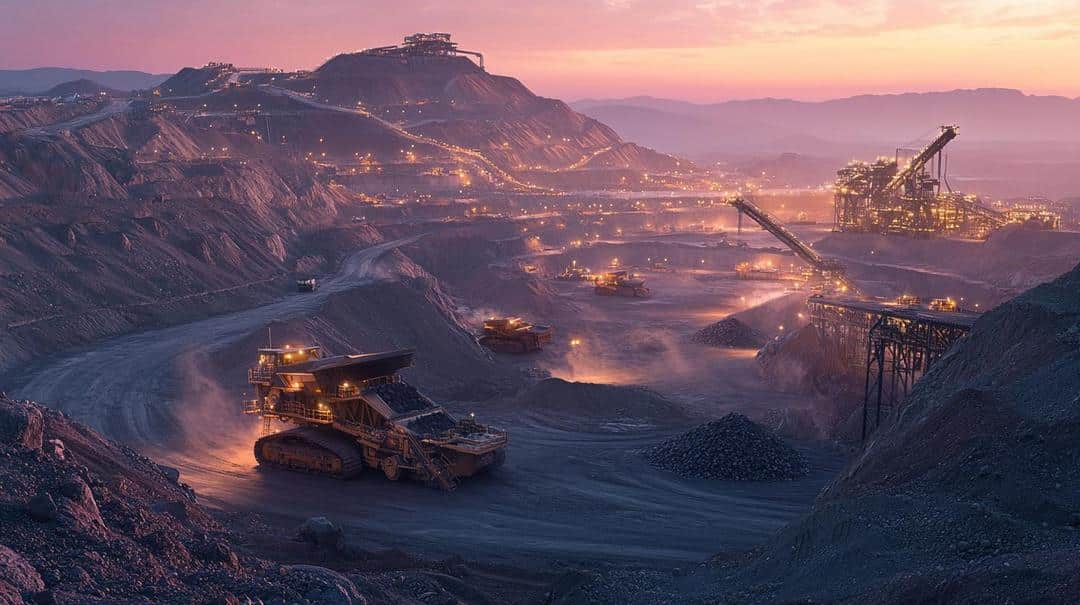Rare earths are at the center of one of the biggest US-China trade debates! Did you know that 90% of the world’s rare earths used to come from China? These 17 elements power the vast majority of modern technology; everything from your smartphone to military drones—and their role in geopolitics is nothing short of critical. In this article, we’ll explore how rare earths influence US-China trade relations, why they matter for industries like tech and defense, and what current policies are shaping their global trade.
Let’s dig in.
What's Inside
Why Do Rare Earths US-China Trade Relations Matter?
Rare earth elements are a group of 17 metallic elements with unique magnetic, luminescent, and electrical properties that make them critical to modern technology. Unlike their name suggests, these elements aren’t particularly rare in the Earth’s crust, but they are challenging to extract and process economically.
Critical Industrial Applications
Rare earths play a crucial role in several high-tech and strategic industries:
- Technology: Essential components in smartphones, electric vehicle batteries, and advanced semiconductors
- Defense: Key materials in precision-guided missiles, fighter jet engines, and advanced communication systems
- Renewable Energy: Critical for wind turbine generators and high-efficiency batteries
- Electronics: Fundamental to producing powerful magnets, laser technologies, and display screens
China’s Rare Earth Dominance
China has strategically positioned itself as the global leader in rare earth production and processing:
- Controls approximately 80% of global rare earth processing capacity
- Possesses significant mining and refinement infrastructure
- Uses rare earths as a potential economic and geopolitical leverage point
A Brief History of Rare Earth Trade
The Rise of Chinese Rare Earth Supremacy
The 1990s marked a pivotal moment in rare earth production, with China emerging as the dominant global supplier:
- Offered lower-cost production compared to international competitors
- Invested heavily in mining and processing infrastructure
- Gradually displaced Western rare earth producers through competitive pricing
Critical Turning Points
Several key events highlighted the strategic importance of rare earths:
- 2010 China-Japan Rare Earth Crisis (opens in a new tab): China temporarily blocked rare earth exports to Japan, demonstrating potential supply chain vulnerabilities
- Subsequent international recognition of rare earths as a critical strategic resource
- Increased global interest in developing alternative rare earth production capabilities
Current US-China Trade Policies on Rare Earths (2024 Updates)
US Strategic Responses
The United States has implemented several policy initiatives to reduce dependence on Chinese rare earth supplies:
- CHIPS Act (opens in a new tab): Provides funding to develop domestic semiconductor and rare earth processing capabilities
- Inflation Reduction Act (opens in a new tab): Incentivizes domestic manufacturing and critical mineral production
- Strategic investments in mining and processing infrastructure
Chinese Policy Adjustments
China continues to leverage its rare earth market position:
- Implementing refined export controls
- Developing more sophisticated processing technologies
- Exploring international partnerships to maintain market influence
Global Rare Earth Production Trends and Geopolitical Impacts
Emerging Production Centers
Recent developments show increasing diversification in rare earth production:
- United States: Expanding mining exploration in states like California and Wyoming
- Australia: Developing significant rare earth mining and processing capabilities
- African nations: Exploring rare earth mineral potential
Future Projections
Anticipated rare earth demand demonstrates significant growth potential:
- Electric vehicle battery production is expected to drive substantial market expansion
- Artificial intelligence and advanced computing increasing rare earth requirements
- Renewable energy transition creating additional demand
What’s at Stake? Tech, Defense, and Economic Implications of Rare Earths
Strategic Significance
Rare earths represent more than an economic commodity:
- Critical for maintaining technological and military competitive advantages
- Essential for advanced defense technologies
- Key to supporting global energy transition efforts
Potential Disruption Risks
Supply chain vulnerabilities could have significant consequences:
- Potential technology development slowdowns
- Defense capability constraints
- Economic performance impacts across multiple sectors
The complex landscape of rare earth production and trade continues to be a critical factor in international economic and geopolitical strategies, with far-reaching implications for global technological and industrial development.
Conclusion
Understanding the significance of rare earths offers insights into how economic interdependence, innovation, and geopolitical strategy collide. Downstream industries are impacted by their ability to acquire rare earths for their products affordably. Without products, we don’t have a whole lot else to work with. If you’re paying attention to this industry, you might get a front-row preview of what is coming.
FAQs
Why are rare earths important in US-China trade relations?
Rare earths are essential to critical sectors like tech, defense, and energy. China dominates global production, giving it significant leverage in trade with the US.
How reliant is the US on China for rare earths?
Historically, the US relied on China for over 80% of its rare earth imports. Efforts are underway to diversify supply chains, but dependency remains significant.
What policies has the US implemented to reduce rare earth reliance?
The US has passed initiatives like the CHIPS Act and invested in domestic mining, recycling, and partnerships with allies like Australia to secure alternative supplies.
Does the US produce any rare earths domestically?
Yes, the Mountain Pass mine in California is currently the largest rare earth production site in the US. However, most of its output is sent to China for processing.
What industries are most impacted by rare earth shortages?
Industries such as consumer electronics, defense, renewable energy, and electric vehicles are heavily affected due to rare earths’ role in manufacturing high-tech components.


Dustin
Driven by a fascination with rare earth elements and their role in powering modern tech and engineering marvels. A true car and tech enthusiast, he loves exploring how these hidden heroes fuel our most exciting innovations.
You Might Also Like…